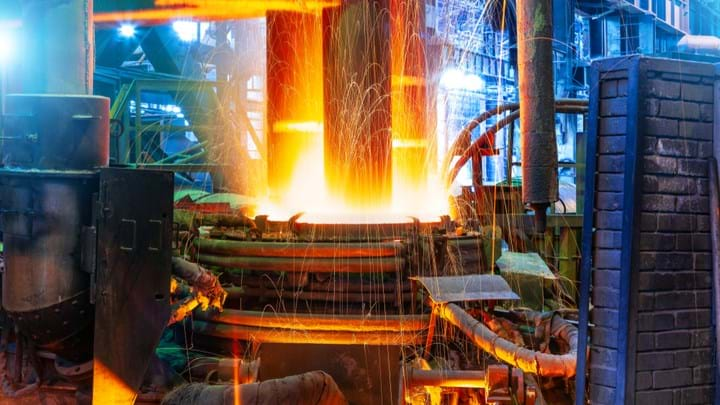Engineers push to make zero emissions steel and cement from a single process

WHAT if it were possible to make cement as a byproduct of recycling steel – and power its production with green energy? This is the focus of a new two-year project involving researchers and industry from across the UK who are working to prove that two materials which are fundamental to society can be manufactured in a combined process that could help cut the huge volumes of emissions normally produced.
Cement is a staple of modern life. It’s used to make our homes, cities, and the infrastructure that connects them. Society uses so much that it’s our second-most consumed product after potable water. And the emissions it produces are huge, making up an estimated 8% of global output. Decarbonising cement manufacture is particularly challenging because CO2 is produced by burning fuels to heat the high-temperature kilns that are used to manufacture cement, and the chemical reactions involved in production naturally emit CO2 as well. To achieve climate targets and reach net zero by 2050, greener methods of producing high-volume materials like cement and steel will be crucial. Efforts are underway to capture the emissions from cement plants and store them underground and to embed the emissions within pre-cast blocks.
But engineers at the University of Cambridge have hit upon a different approach after they realised that the lime flux used in electric arc furnaces to recycle steel has almost the same chemical composition as the old waste cement paste that is produced when used concrete is crushed and the sand and aggregate removed. The result could be a process that converts construction and demolition waste into recycled cement using the furnaces that recycle scrap steel.
A change of flux
During steel recycling, lime flux is added to the electric arc furnace where it removes impurities and forms a slag. Working with the Materials Processing Institute (MPI), the team trialled replacing the usual lime flux with used cement. They separated the resulting hot liquid slag that floats on the surface of molten steel during recycling and then cooled it to form a powder. They then mixed this with gypsum and cast it into cement samples. Analysis showed the samples were very similar to conventional Portland cement, and the team says this points to the exciting possibility that cement could be made as a byproduct of steel recycling in electric arc furnaces powered by renewable energy. In turn, this promises zero-emissions steel and zero-emission cement, and an opportunity to close the loop on supply chains.
Backed by UK Government funding from its Transforming Foundation Industries challenge, the MPI is now leading a £6.5m (US$7.8m) project to develop the process. The two-year project involves partners at the University of Cambridge, Atkins, Tarmac and Balfour Beatty. During the Cement 2 Zero project MPI will use its own electric arc furnace in Teesside to investigate the technical and commercial aspects of the process. The project will also develop a prototype crusher for recovering cement paste from demolition waste, and create a prototype electric arc furnace slag cooling system to transform steel slag into cement clinker.
Chris McDonald, CEO of the MPI, said: “We are delighted to be leading a project that has the potential to make a major contribution to achieve a zero-carbon society, secure and increase jobs in the UK cement and steel sectors and challenge conventional production processes, creating high-value materials from demolition waste.”
Philippa Horton, who manages the sustainable materials-focused Use Less Group at Cambridge’s Department of Engineering and co-developed the process, said: “If [the Cambridge Electric Cement process] lives up to the promise it has shown in early laboratory trials, it could be a turning point in the journey to a zero-emissions society.”
The MPI said in a statement that the mineral products industry contributed around £16bn to the UK’s GDP in 2018, directly employs 81,000 people and supports a further 3.5m jobs. It said steel recycling in the UK could expand to 11m t/y by recycling all scrap, and estimates it could be worth £2.8bn/y. With forecasts that the global market for steel recycling may treble over the next 30 years, there is the opportunity that the new process could create new markets within the circular economy, including adding value to construction and demolition waste.
UK Business Secretary Kwasi Kwarteng said: “Driving down emissions from the production of cement is one of the key challenges facing British manufacturers and construction companies. Achieving it will have hugely beneficial knock-on effects for the competitiveness of businesses right across UK supply chains.”
Recent Editions
Catch up on the latest news, views and jobs from The Chemical Engineer. Below are the four latest issues. View a wider selection of the archive from within the Magazine section of this site.




